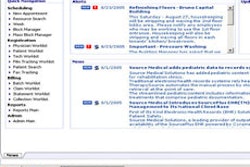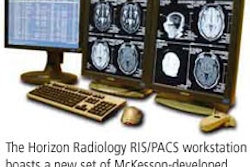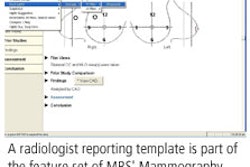An old alliterative says that prior planning prevents poor performance. This is particularly true for cardiology practices considering the adoption of electronic medical record (EMR) technology, according to a speaker at the Towards the Electronic Patient Record (TEPR) conference in Baltimore last month.
"You need a detailed knowledge of who you are, what you do, and how you do it," said Michael Mytych, principal of Health Information Consulting in Milwaukee, who presented his strategy for cardiac EMR implementation at the meeting.
Cardiac cartography
Mytych recommended that cardiac administrators first create a detailed picture and map of their practice. This would include documentation for each location, the diagnostic services offered by the group, any clinical trials that it is participating in, any specialty clinics it manages, and its affiliated hospitals.
A service map should include the type of service, the location where it is provided, and the available hours. Workflow processes for each service in each location will need to be created. It is important to note mandatory requirements for workflow differences for the same services in all locations, Mytych said. This could include physical limitations of the space, staffing issues, or hospital requirements.
This is important to recognize, he said, because not all cardiology groups conduct the same service workflow in all locations. "All EMR vendors assume workflows will all be the same at all locations," he said. Modifications may have to be made to either the EMR application or to the workflow itself to ensure a successful implementation.
The workflow analysis mapping process will provide cardiac administrators with at least seven action areas for the practice prior to EMR implementation, according to Mytych:
- What needs to be changed?
- What can be done more efficiently?
- What has to be done because of the EMR system?
- What do patients expect?
- What's best for the provider?
- What's best for the patient?
- What coordination needs to take place with other partners, such as hospitals?
Other information technology (IT) systems that the practice interacts with are another area administrators should explore. The group will need to ascertain what information in which format is being provided by its partners to ensure that it is getting the appropriate and desired data for its EMR application.
Physician perceptions
The cardiac administrator should understand the impact of the EMR system on physician valuations, Mytych said. This includes replacing the current paper charts with digital reports and providing clinical decision support. In addition, providing data will support better reimbursement and provide the required documentation, potentially enabling better patient and physician interaction.
Cardiologists will, understandably, have fears about the implementation of new practice technology in their work environment. Savvy administrators need to understand the cause of these fears as part of the EMR planning process. Mytych has identified seven common EMR comments by physicians that demonstrate their underlying concerns:
- Don't slow me down.
- Don't take away my dictation options.
- Don't make me look foolish in front of my patients.
- Don't tell me it won't work.
- Don't tell me it will save me time.
- Don't expect me to be patient if it is slow.
- Don't expect me to be an expert at operating it.
"It is important to recognize those EMR components that will drive physician value," Mytych said.
These include the following:
- Single sign-on and authentication
- Common presentation layer and tools
- A persistent data repository
- Physician specialty tailoring for preference
- A critical mass of digital data types (such lab results and consultation reports)
Mytych recommends that a cardiology practice considering EMR adoption start building a digital repository of its lab results, hospital reports, and procedure test reports to create what he calls a "critical mass" of data. Building this repository prior to implementation will allow physicians to more easily embrace the chartless environment possible with an EMR application.
"Once they get used to the EMR," Mytych said, "they will want more."
More will generally mean connectivity of the cardiac EMR system with a cardiac PACS, which is the most important and requested feature, he said. Like their colleagues in radiology who utilize RIS/PACS interfaces, cardiologists also want to have access to reports and images from within a common application.
For a cardiac EMR implementation to be successful, extensive groundwork must be done both in the practice and with the application itself, Mytych said.
"Know and understand all preferences, options, and limitations for setup of the system in as much detail as possible prior to bringing on the first physician," he advised.
Mytych recommends running extensive workflow simulations through the system in the physical areas of the clinic where they are going to occur before going live with the EMR application. EMR implementation is a never-ending goal, according to Mytych. It will require patience and an understanding that optimization of the EMR system is an ongoing process.
"Your implementation and success with an EMR is dependent on the practice's willingness to change," he said.
By Jonathan S. Batchelor
AuntMinnie.com staff writer
June 9, 2006
Related Reading
EMR proves profitable for multispecialty practice, May 24, 2006
Disaster plan drives post-Katrina recovery for EMR-based group, May 23, 2006
Insurer group promotes health record interoperability, May 19, 2006
U.S. lags in implementing healthcare IT, May 17, 2006
EMR tool creates feedback on critical findings, April 28, 2006
Copyright © 2006 AuntMinnie.com



















